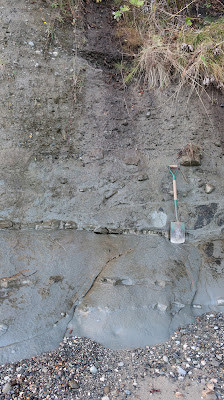The coastal strip of Olympic National Park that coincides with U.S. Highway 101 has various pull outs and short trails to the shoreline. Near the north end of the strip just south of Ruby Beach (HERE) a sign indicates "Big Cedar". A short gravel road leads to a parking lot for a short hike through a grove of very large western red cedar trees that have a great deal of character. And they are big.
The multi crown branching canopy of the trees suggests past stresses. Most likely in my mind is intense storm events that have periodically broken off the tops of the trees. Periodic but very rare wildfire may have taken place as well that damaged but did not kill the trees. While high winds are common on the outer coast, there have been some some extreme wind events that would break the tree tops. A storm in the 1920s was reported to have had 120 mph winds. Given the 100s of years these trees have grown it is reasonable to assume that similar storms have impacted this grove of trees repeatedly.
The multi lead trees allowed them to survive the the logging events that swept over this landscape prior to protection of the forest as first a national monument and later as a national park.

















































